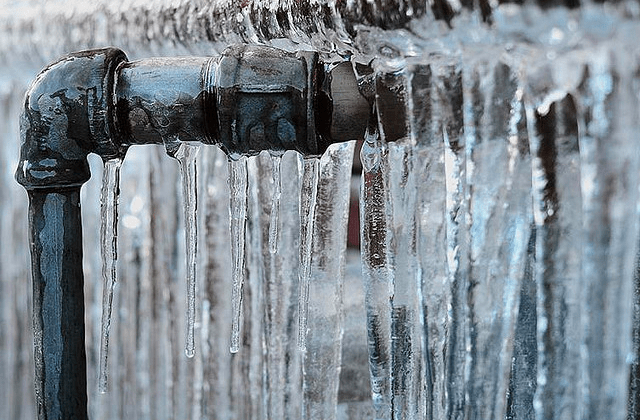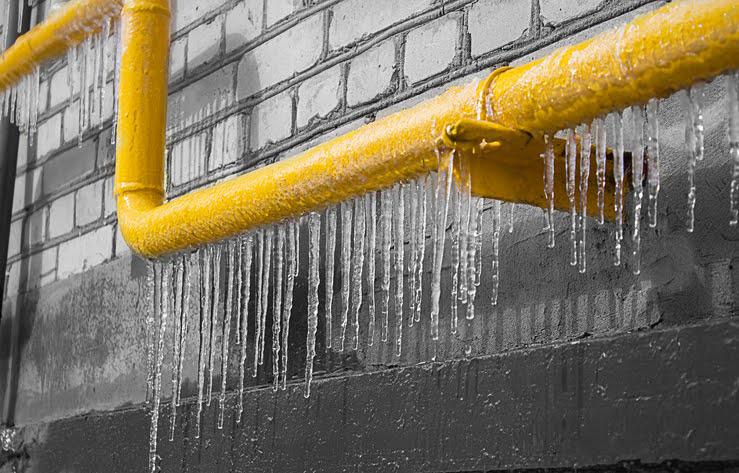How to Defend Your Pipes from Cold Weather: Expert Tips
How to Defend Your Pipes from Cold Weather: Expert Tips
Blog Article
We have found the article about Prevent Frozen Pipes listed below on the web and reckoned it made sense to relate it with you on my blog.

Winter can wreak havoc on your plumbing, especially by freezing pipelines. Below's just how to prevent it from happening and what to do if it does.
Introduction
As temperatures decrease, the danger of frozen pipes boosts, potentially causing expensive repair services and water damages. Comprehending exactly how to avoid frozen pipes is crucial for homeowners in cool environments.
Prevention Tips
Insulating at risk pipelines
Wrap pipelines in insulation sleeves or utilize warm tape to protect them from freezing temperature levels. Concentrate on pipes in unheated or external areas of the home.
Home heating methods
Maintain interior rooms appropriately heated up, specifically areas with pipes. Open up closet doors to permit cozy air to circulate around pipes under sinks.
Exactly how to determine icy pipelines
Seek decreased water flow from taps, unusual smells or sounds from pipes, and noticeable frost on exposed pipes.
Long-Term Solutions
Structural adjustments
Take into consideration rerouting pipes far from outside walls or unheated locations. Include added insulation to attic rooms, cellars, and crawl spaces.
Updating insulation
Buy top quality insulation for pipes, attics, and walls. Proper insulation helps keep regular temperature levels and lowers the danger of frozen pipes.
Protecting Exterior Pipes
Garden hoses and exterior taps
Detach and drain yard hose pipes before winter months. Set up frost-proof spigots or cover exterior faucets with shielded caps.
Comprehending Frozen Pipelines
What causes pipelines to freeze?
Pipes ice up when subjected to temperature levels below 32 ° F (0 ° C) for expanded periods. As water inside the pipes ices up, it expands, putting pressure on the pipe wall surfaces and possibly creating them to break.
Dangers and damages
Frozen pipes can lead to water supply disturbances, residential or commercial property damage, and pricey fixings. Burst pipelines can flooding homes and cause extensive structural damage.
Indications of Frozen Piping
Recognizing frozen pipelines early can avoid them from breaking.
What to Do If Your Pipes Freeze
Immediate activities to take
If you suspect icy pipelines, keep faucets available to alleviate stress as the ice melts. Make use of a hairdryer or towels taken in warm water to thaw pipelines gradually.
Verdict
Stopping frozen pipes calls for positive measures and fast reactions. By understanding the reasons, signs, and safety nets, property owners can protect their pipes throughout cold weather.
6 Proven Ways to Prevent Frozen Pipes and Protect Your Home
Disconnect and Drain Garden Hoses
Before winter arrives, start by disconnecting your garden hoses and draining any remaining water. Close the shut-off valves that supply outdoor hose bibs and leave the outdoor faucet open to allow any residual water to drain. For extra protection, consider using faucet covers throughout the colder months. It’s also important to drain water from any sprinkler supply lines following the manufacturer’s directions.
Insulate Exposed Pipes
Insulating your pipes is an effective way to prevent freezing. Pipe insulation is readily available at home improvement stores and is relatively inexpensive. Pay close attention to pipes in unheated areas such as the attic, basement, crawl spaces, or garage. Apply foam insulation generously to create a buffer against the cold. You can also wrap your pipes in heat tape or thermostat-controlled heat cables for added warmth.
Seal Air Leaks
Inspect your home for any cracks or openings that could let in cold air. Seal any holes around the piping in interior or exterior walls, as well as the sill plates where your home rests on its foundation. Additionally, make sure to keep your garage door closed unless you’re entering or exiting. Leaving it open creates a significant air leak that can lead to frozen pipes.
Allow Warm Air Circulation
During cold snaps, it’s essential to allow warm air to circulate evenly throughout your home. Leave interior doors ajar to promote better airflow. Open kitchen and bathroom cabinets to help distribute heat consistently around the rooms. If you have small children or pets, be sure to remove any household chemicals or potentially harmful cleaners from open cabinets for safety.
Let Faucets Drip
A small trickle of water can make a big difference in preventing ice formation inside your pipes. When temperatures drop significantly, start a drip of water from all faucets served by exposed pipes. This continuous flow helps prevent the water from freezing. Additionally, running a few faucets slightly can relieve pressure inside the pipes, reducing the chances of a rupture if the water inside does freeze.
https://choateshvac.com/6-proven-ways-to-prevent-frozen-pipes-and-protect-your-home/

Hopefully you enjoyed reading our piece about How to Prevent Your Pipes From Freezing. Thanks a lot for spending some time to read our content. Are you aware of anybody else who is sincerely interested in the subject? Do not hesitate to share it. Many thanks for your time invested reading it.
Get Offer Report this page